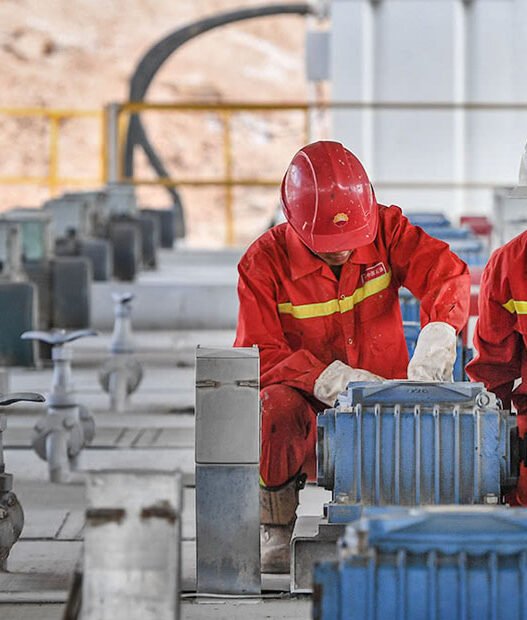In the fast-paced world of industrial businesses, efficiency is paramount. Small changes in processes, technology, and even workforce training can lead to significant improvements in productivity, cost-effectiveness, and safety. By implementing these five simple changes, you can streamline operations, reduce downtime, and increase your bottom line.
1. Invest in Specialized Equipment
One of the easiest ways to improve industrial efficiency is by investing in specialized equipment that meets your business’s specific needs. General-purpose tools may work, but specialized equipment can help improve precision, reduce errors, and speed up production.
According to Future Market Insights Inc, 70% of industrial businesses in the United States stressed the need for specially designed flanges for particular industrial uses. These custom components allow for smoother and more efficient operations, reducing wear and tear on machinery and ultimately lowering maintenance costs. Whether it’s specialized flanges, advanced robotics, or custom tools, upgrading to equipment that is tailored to your specific industry requirements can help you maximize output with minimal effort.
Additionally, specialized equipment often comes with improved energy efficiency, allowing your business to lower its energy consumption while maintaining production levels. Not only does this make operations more cost-effective, but it also aligns with sustainability initiatives that are increasingly important in today’s industrial landscape.
2. Streamline Communication with Technology
Communication plays a crucial role in the efficiency of any industrial operation. Whether it’s between team members on the factory floor, between departments, or with suppliers, clear and effective communication is key. In the past, businesses relied on outdated communication systems, leading to confusion, delays, and inefficiencies.
Today, technology can revolutionize how industrial businesses communicate. Tools like cloud-based project management systems, team messaging apps, and even real-time tracking of production progress can help streamline communication across all levels. Implementing integrated communication systems ensures that everyone is on the same page, reducing downtime and improving coordination.
Furthermore, advancements like 5G networks make these communication systems even more powerful. 5G makes networks faster and allows for more devices to connect to the internet without lag time. This means that your team can communicate instantly, whether they are on the factory floor or working remotely, allowing for quicker decision-making and improved workflow.
3. Improve Workforce Training and Safety Protocols
A well-trained workforce is one of the most important assets any industrial business can have. Investing in ongoing training programs will not only improve worker efficiency but also contribute to a safer and more compliant work environment.
Many industrial processes come with inherent risks, which is why having the proper safety training is essential. A reputable metal fabricator, for example, will include safety training as part of their documented quality control program. This safety training may include the proper use of personal protective equipment (PPE), ensuring that workers are not only working efficiently but also minimizing their exposure to potential hazards.
By investing in robust training and safety programs, you will reduce workplace accidents, prevent costly downtime due to injuries, and ensure compliance with safety regulations. Additionally, a safer workplace is a more productive workplace. Employees are more focused and motivated when they feel their well-being is prioritized.
4. Embrace Automation and Robotics
Automation has been a game-changer for many industries, allowing businesses to increase output, reduce human error, and cut down on labor costs. From automated assembly lines to robotic arms for precise tasks, integrating automation into your business operations can drastically improve efficiency.
Modern automation systems are not only faster than manual labor, but they are also highly accurate, reducing the likelihood of costly mistakes. Whether it’s automating inventory management, production schedules, or material handling, implementing robotic systems can free up your employees to focus on more complex tasks that require human input.
Moreover, automation can help you maintain a consistent level of quality in your products. The precision offered by automated machines ensures that each product meets the same high standards, reducing the need for rework or waste.
5. Optimize Your Supply Chain
An efficient supply chain is the backbone of any industrial business. However, many companies overlook the importance of supply chain optimization, which can lead to delays, excess inventory, and wasted resources. Streamlining your supply chain can significantly enhance your overall business efficiency.
Start by evaluating your current suppliers and logistics partners. Are you getting the best deal on materials, and is your supply chain flexible enough to handle fluctuations in demand? Consider working with suppliers who offer just-in-time delivery or are located closer to your facility to reduce lead times and transportation costs.
Another key to optimizing your supply chain is improving inventory management. Excess inventory ties up capital and storage space, while insufficient inventory can cause production delays. Using inventory management software or automated systems can help you track materials and products in real time, allowing you to adjust your orders based on actual demand. This will reduce waste and ensure that you are always stocked with the right materials at the right time.
These changes will not only reduce costs but also increase productivity, boost safety, and help your business remain competitive in an ever-evolving industrial landscape. The future of industrial efficiency is within your grasp—start implementing these simple yet effective strategies today and watch your business thrive.













